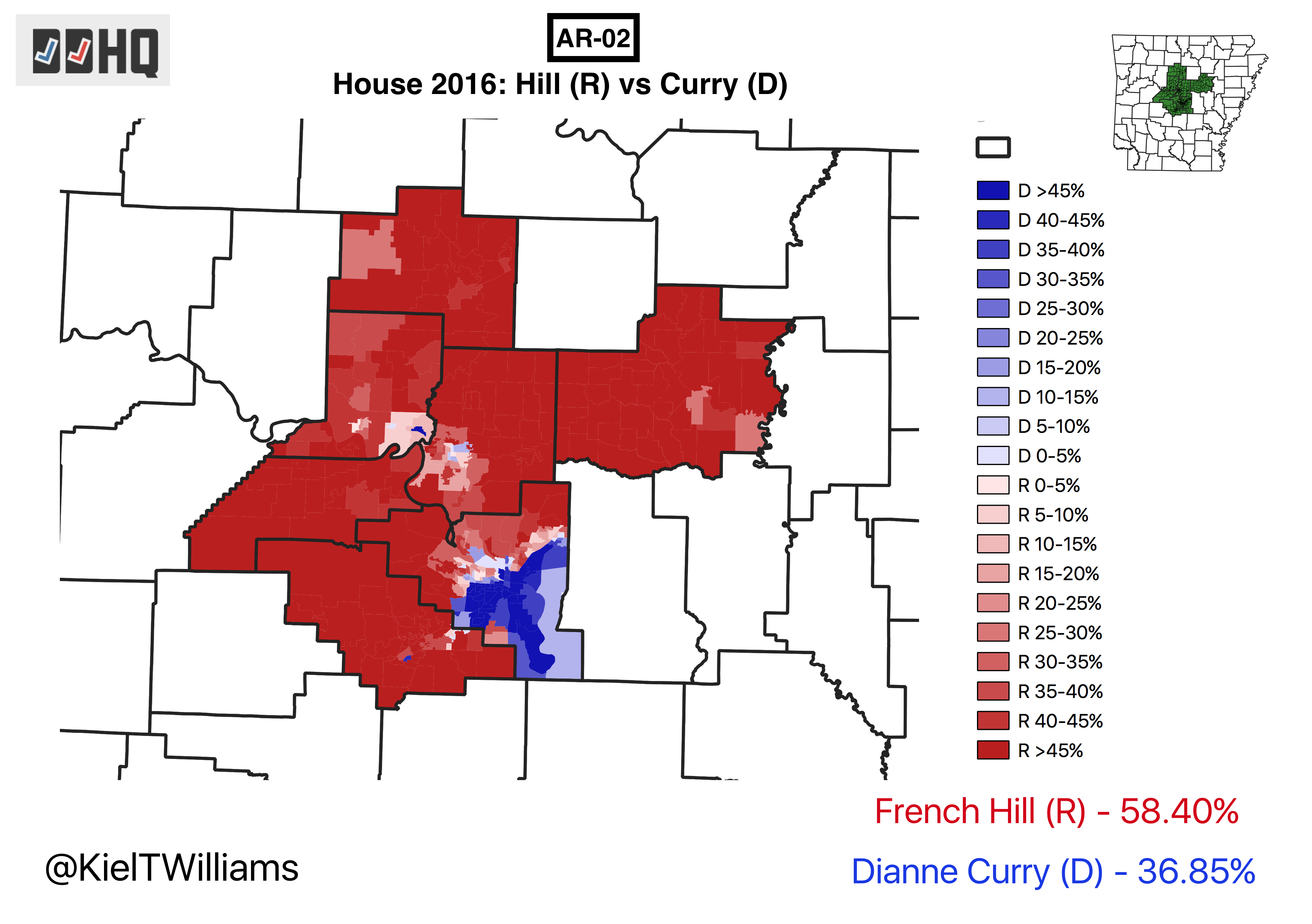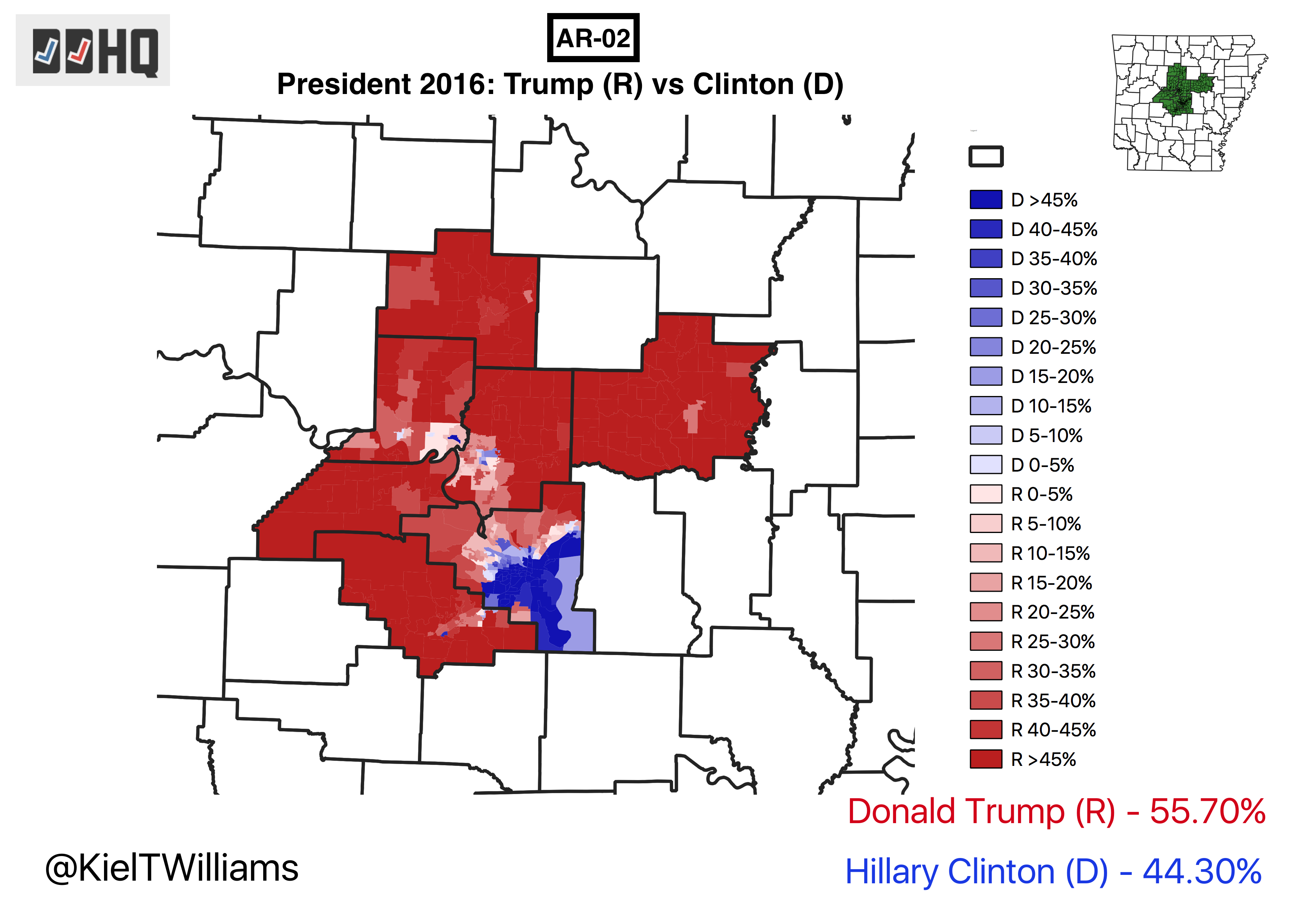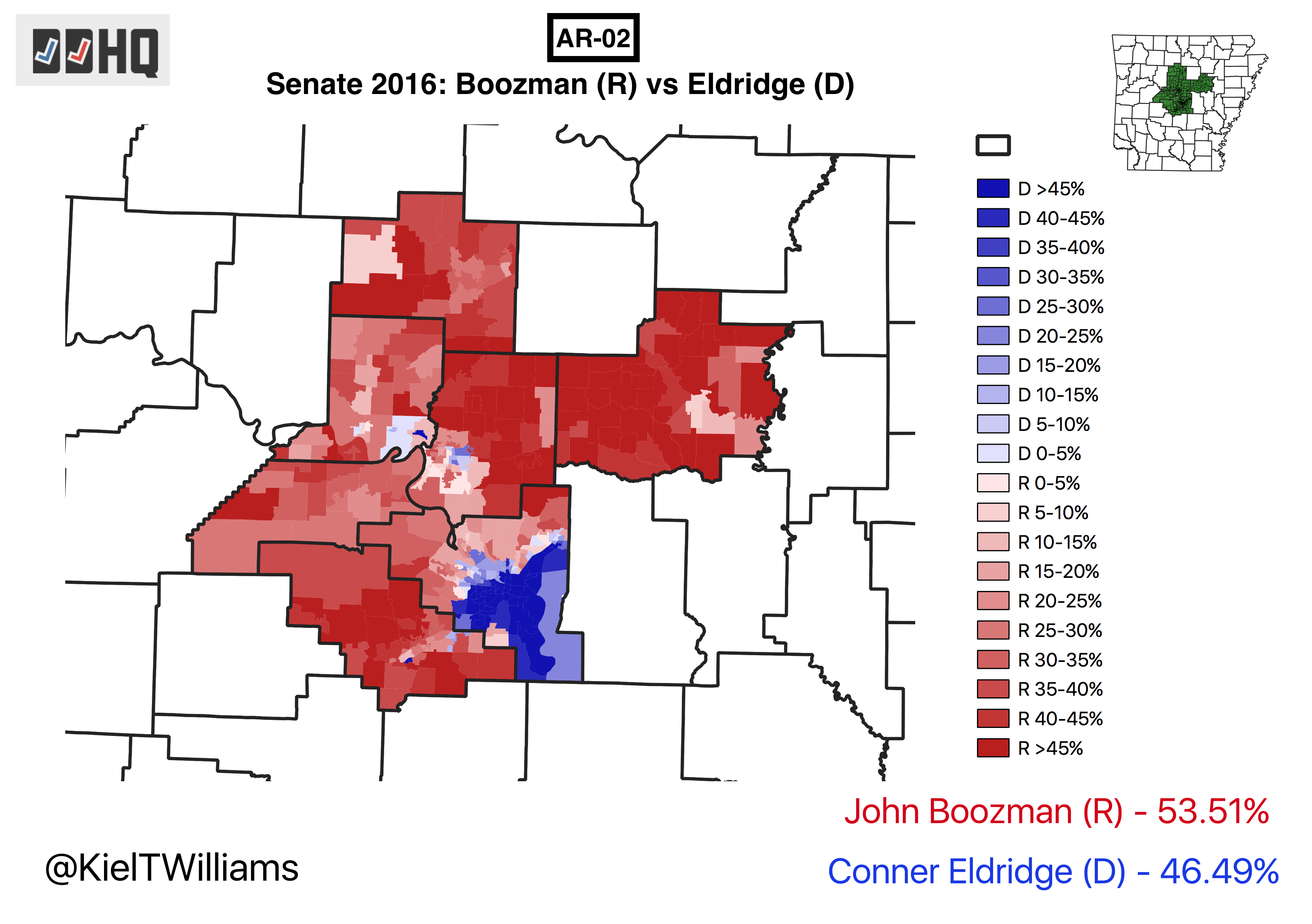Arkansas’ 2nd congressional district is another place where Democrats typically wouldn’t be competitive, but a strong national environment – coupled with a strong candidate – could put them within striking distance. AR-2 primarily represents Little Rock and its surrounding suburbs, together with a few adjoining rural counties. Represented by French Hill (R) since 2014, this R+7 district voted for Mitt Romney by 12 points in 2012, before supporting Donald Trump by a 10-point margin in 2016. They haven’t supported a Democratic presidential candidate since Bill Clinton. However, like much of Arkansas, this district has a strong ancestral Democratic history. Indeed, the district was represented by Democrats for most of the 20th century – all the way up until 2010, when Vic Snyder (D) strategically retired (his reelection prospects were dubious at best).

The 2016 House election illustrates the extent to which Democrats let this district slip away. Rep. French Hill easily defeated Little Rock school board member Dianne Curry, winning everywhere except Pulaski county (Little Rock). Curry struggled outside the heart of Little Rock, failing to carry the small outlying cities of Benton (to the southwest) and Conway (to the northwest). Rep. Hill racked-up massive margins in the rural regions of the district.

The 2016 Presidential election tells a similar story – albeit one with more of a silver lining for Democrats. While still handily defeating Hillary Clinton, Donald Trump struggled substantially more than French Hill in the suburbs around Little Rock, and lost several precincts in the neighboring city of Conway, to the northwest. These suburban voters who stuck with French Hill – but flipped from Trump to Clinton – are the voters who will probably decide how high the “Blue Wave” rises in November. If Hill supporters in the immediate area around Little Rock decide that a vote for French Hill is a vote for Trump, then some fraction of them will defect.

Maybe the most encouraging 2016 map for Arkansas Democrats is former US Attorney Conner Eldridge’s 7-point loss to Senator John Boozman (R) in the district. Eldridge made significant progress in rural areas, routinely producing 20-point deficits, rather than the 40-point loses generated by Clinton and Hill. His trick was simple: he ran as a centrist-minded Democrat, who emphasized his concern for the national debt, and condemned Obama’s executive action on gun issues.

Comparing Clinton and Eldridge’s performance directly, we see an interesting divide between their voters. While their net performance was comparable, Eldridge did far better among rural residents, while Clinton was preferred by the city and inner-lying suburbs. Eldridge almost reflects an “old-school” approach by Democrats to tough elections: tack to the center, and try to pick-off enough conservative-leaning voters to assemble a majority. At the same time, Hillary Clinton tried – with mixed success – to make progressive ideas more palatable than Donald Trump to suburbanites. Whatever the merits of this approach, it seems to more closely reflect the strategy being taken by Democrats in this year’s midterm. That is to say, future Democratic hopes for this district probably rest more on the Little Rock suburbs, than on the rural northern areas.
This November, Rep. French Hill will face Clarke Tucker (D), a member of the Arkansas state house who represents part of Little Rock. Tucker is being supported by the DCCC’s Red-to-Blue program, and has done well fund-raising (though not as well as his opponent). The Øptimus legislative model is very skeptical of Democrats’ chances here though, giving Tucker only a 17% chance of victory.
(For additional information on the district, consider Noah Rudnick’s article from earlier this year.)